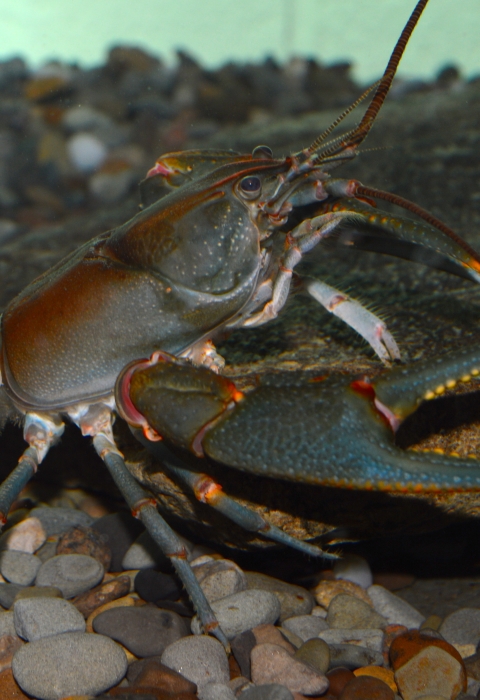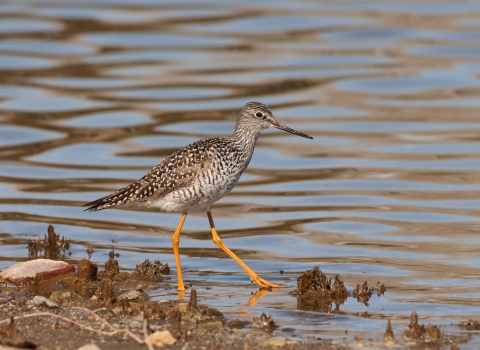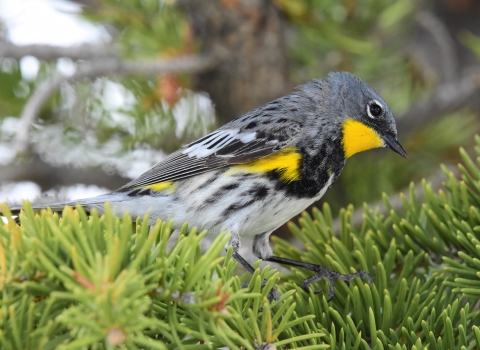The Big Sandy and Guyandotte River crayfishes have disappeared from many of the streams they once occupied in Kentucky, Virginia, and West Virginia. Ongoing erosion, sedimentation, and reduced water quality are the primary causes of the species’ declines.
In 2016, the U.S. Fish and Wildlife Service (Service) listed the Big Sandy crayfish as threatened and the Guyandotte River crayfish as endangered under the Endangered Species Act (ESA). The Service has now completed the next step required by the ESA, designating more than 440 stream miles of critical habitat that are essential for the species’ survival in the wild.
“Critical habitat helps focus conservation efforts where they are needed most,” said the Service’s North Atlantic-Appalachian Regional Director Wendi Weber. “By working with our state, federal and non-governmental partners to maintain and improve the health of the watersheds in the Big Sandy and Guyandotte River basins, we can help conserve and recover the Big Sandy and Guyandotte River crayfishes for future generations.”
The Big Sandy crayfish persists in less than 40 percent of the streams in which it once likely lived. Designating those remaining streams as critical habitat, a total of 362 stream miles, helps focus conservation actions. These streams are located in Martin and Pike counties, Kentucky; Buchanan, Dickenson and Wise counties, Virginia; and McDowell, Mingo and Wayne counties, West Virginia.
The Guyandotte River crayfish was once found in six stream systems across the Upper Guyandotte River Basin in West Virginia. At the time of listing, it was determined that the species persisted along 42 miles of two streams in Wyoming County, West Virginia. These 42 miles in Wyoming County are not sufficient for conservation of the species. Therefore, the Service has designated another 42 stream miles (totaling 84 miles) extending to both Wyoming and Logan counties.
The streams designated as critical habitat are considered state waters, and adjacent land is owned by a combination of federal, state, and private landowners. The designation will not affect adjacent landowner activities unless those activities involve federal funding or federal permits and impact designated streams. Critical habitat designation does not establish a wildlife refuge, allow the government or public to access private lands, or require non-federal landowners to restore habitat or recover species.
Big Sandy and Guyandotte River crayfish conservation partners include the Kentucky Department of Fish and Wildlife, Kentucky Transportation Cabinet, Office of Kentucky Nature Preserves, Kentucky Division of Water, Virginia Department of Wildlife Resources, West Liberty University, West Virginia Division of Natural Resources, West Virginia Division of Highways, West Virginia Department of Environmental Protection, West Virginia Coal Association, and the Hatfield-McCoy Trail Authority.
Private landowners can request technical and financial assistance for Big Sandy and Guyandotte River crayfish conservation through the Service’s Partners for Fish and Wildlife Program in Kentucky, Virginia, and West Virginia.
Keeping streams healthy for crayfish benefits people by ensuring clean water for drinking, swimming, wading, and fishing. Additionally, healthy crayfish populations help recycle animal and plant matter and serve as food for other wildlife, including sport fish.
Everyone can help keep streams healthy for crayfish, fish, and other wildlife by following these recommendations:
Drive ATVs and vehicles only on designated trails and not through or in streams.
Do not dump chemicals into streams.
Report chemical spills to state environmental protection agencies.
During timber harvest, construction, or other projects, implement best management practices for sediment and erosion control per state-agency guidance. Here are examples from Kentucky, Virginia and West Virginia.
Start a watershed group or assist in stream- and water-quality monitoring efforts.
Plant trees and other native woody vegetation along stream banks to help restore and preserve water quality.
The Service asked for public comments regarding critical habitat designations for these species in January 2019.
The final critical habitat rule will publish in the Federal Register on Tuesday, March 15, 2022. The rule, comments, and materials the Service received, as well as supporting documentation used in preparing the rule, are available for public inspection today at: https://www.federalregister.gov/public-inspection. Search for Docket No. FWS-R5-ES-2019-0098.
The mission of the U.S. Fish and Wildlife Service is working with others to conserve, protect and enhance fish, wildlife, plants and their habitats for the continuing benefit of the American people. We are both a leader and trusted partner in fish and wildlife conservation, known for our scientific excellence, stewardship of lands and natural resources, dedicated professionals and commitment to public service. For more information on our work and the people who make it happen, visit http://www.fws.gov.


